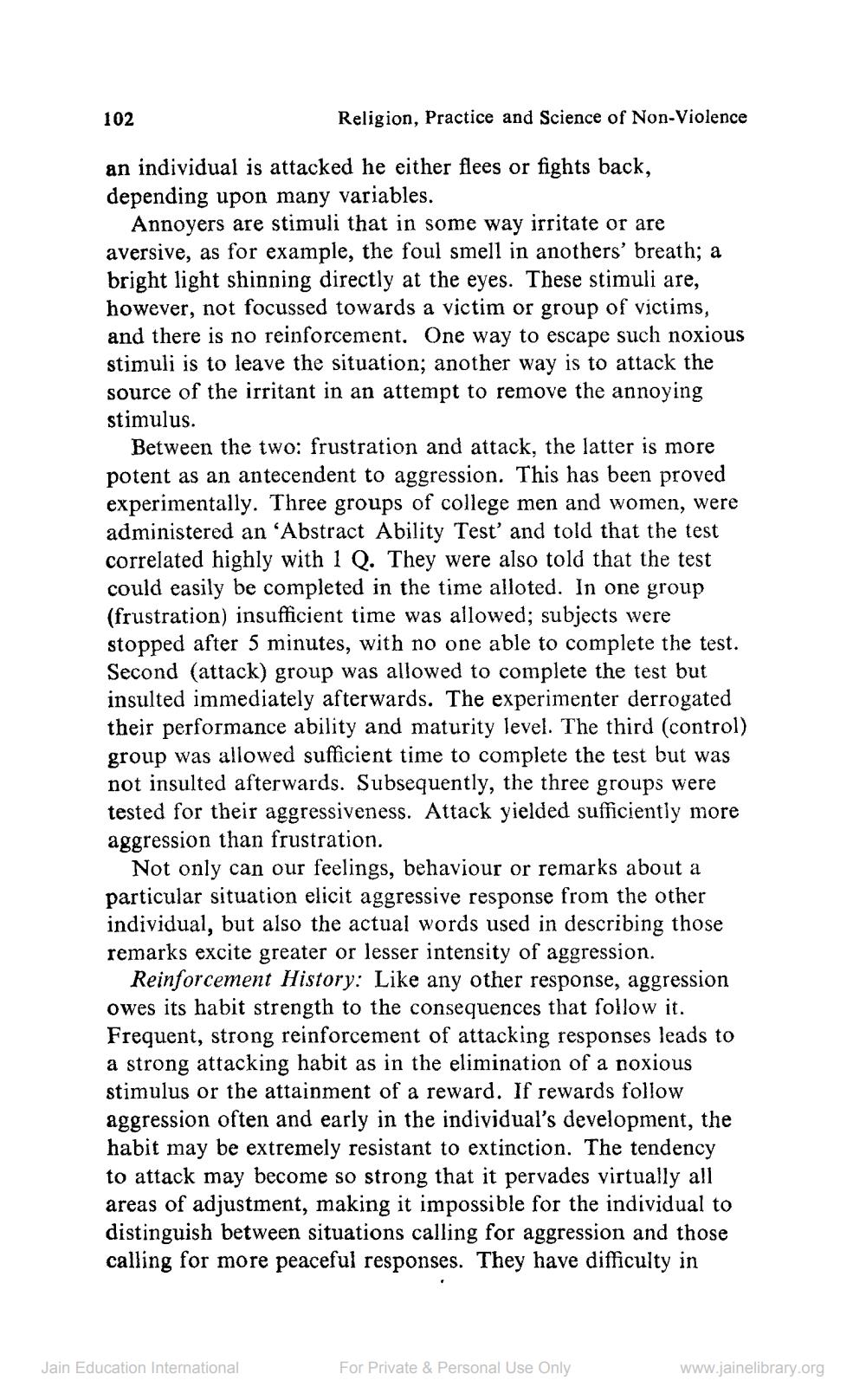________________
102
Religion, Practice and Science of Non-Violence
an individual is attacked he either flees or fights back, depending upon many variables.
Annoyers are stimuli that in some way irritate or are aversive, as for example, the foul smell in anothers' breath; a bright light shinning directly at the eyes. These stimuli are, however, not focussed towards a victim or group of victims, and there is no reinforcement, One way to escape such noxious stimuli is to leave the situation; another way is to attack the source of the irritant in an attempt to remove the annoying stimulus.
Between the two: frustration and attack, the latter is more potent as an antecendent to aggression. This has been proved experimentally. Three groups of college men and women, were administered an 'Abstract Ability Test' and told that the test correlated highly with 1 Q. They were also told that the test could easily be completed in the time alloted. In one group (frustration) insufficient time was allowed; subjects were stopped after 5 minutes, with no one able to complete the test. Second (attack) group was allowed to complete the test but insulted immediately afterwards. The experimenter derrogated their performance ability and maturity level. The third (control) group was allowed sufficient time to complete the test but was not insulted afterwards. Subsequently, the three groups were tested for their aggressiveness. Attack yielded sufficiently more aggression than frustration.
Not only can our feelings, behaviour or remarks about a particular situation elicit aggressive response from the other individual, but also the actual words used in describing those remarks excite greater or lesser intensity of aggression.
Reinforcement History: Like any other response, aggression owes its habit strength to the consequences that follow it. Frequent, strong reinforcement of attacking responses leads to a strong attacking habit as in the elimination of a noxious stimulus or the attainment of a reward. If rewards follow aggression often and early in the individual's development, the habit may be extremely resistant to extinction. The tendency to attack may become so strong that it pervades virtually all areas of adjustment, making it impossible for the individual to distinguish between situations calling for aggression and those calling for more peaceful responses. They have difficulty in
Jain Education International
For Private & Personal Use Only
www.jainelibrary.org




